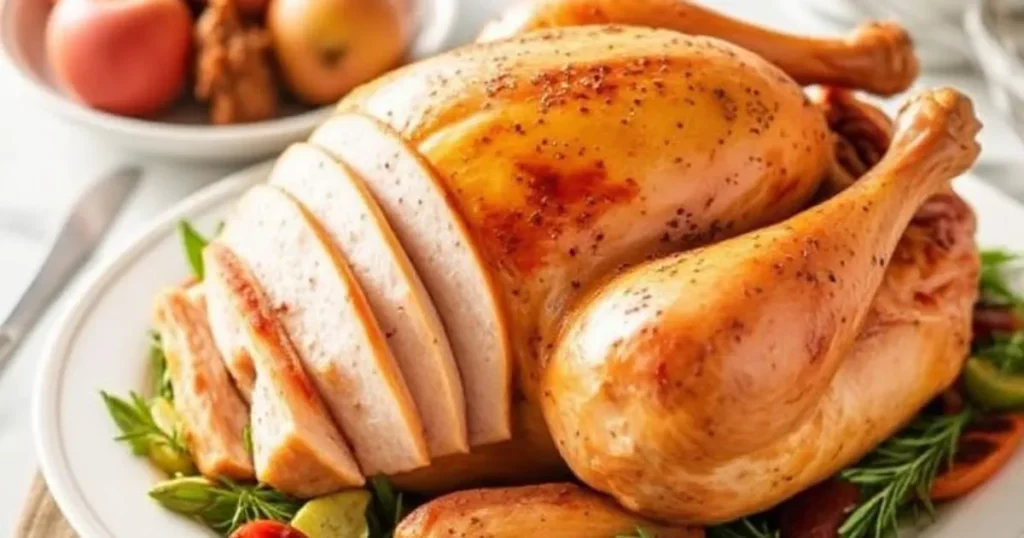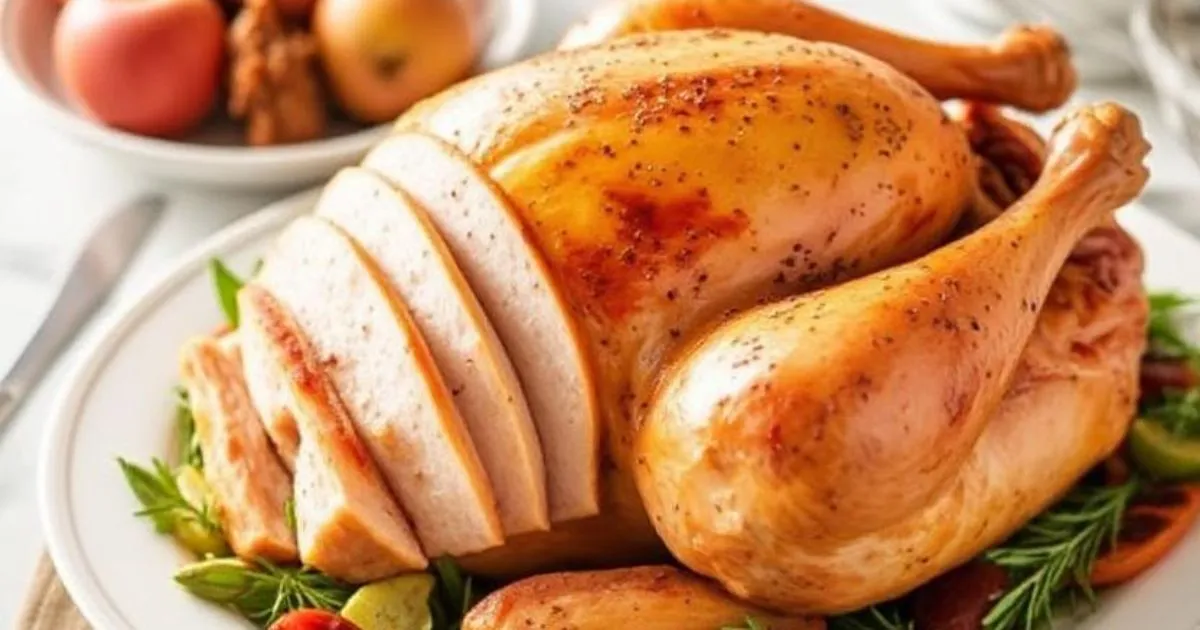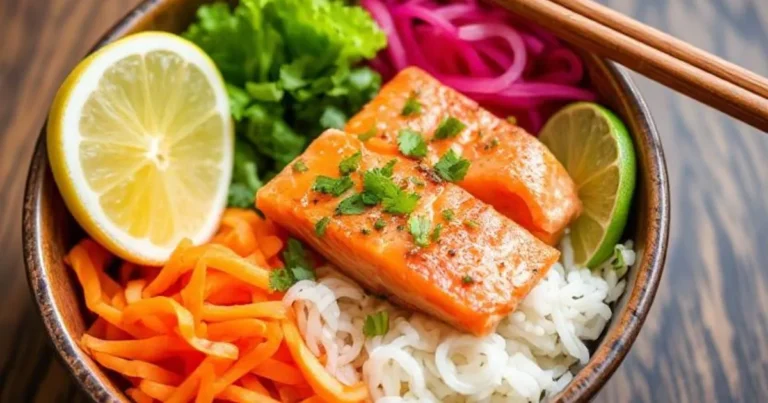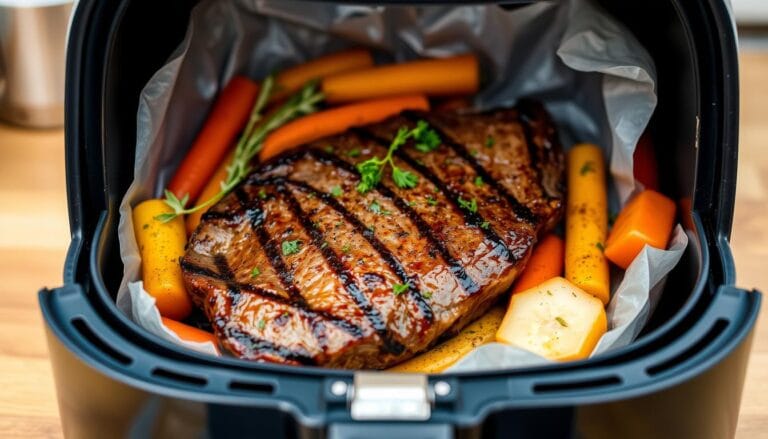How to Cook a Juicy Thanksgiving Turkey with This Easy Recipe
Juicy Thanksgiving Turkey is a time for family, food, and celebration—and at the heart of the feast is the turkey. But let’s be honest: cooking a turkey can feel like a daunting task, especially when you’re aiming for that perfect, juicy, golden-brown bird. No one wants to be left with dry, tasteless meat! The good news? Cooking a juicy Thanksgiving turkey is easier than you think. With the right method and a few simple tricks, you can serve up a turkey that’s both flavorful and moist, making you the star of the dinner table. Keep reading for the step-by-step guide on how to cook a juicy Thanksgiving turkey with this easy recipe.
Table of Contents
Why the Right Turkey Recipe Matters
The turkey is often the centerpiece of Thanksgiving dinner, and cooking it perfectly is crucial to a memorable holiday meal. A dry turkey can ruin the experience, while a juicy, flavorful one will leave everyone going back for seconds. Fortunately, the key to cooking a juicy turkey lies in preparation, seasoning, and technique. With the right approach, your turkey can turn out moist, tender, and packed with flavor.

What You’ll Need for This Easy Thanksgiving Turkey Recipe
Before you begin, it’s important to gather all the ingredients and equipment. Having everything ready to go makes the cooking process smoother and ensures you don’t forget anything along the way. Here’s what you’ll need:
Ingredients
| Ingredient | Quantity |
|---|---|
| Whole turkey (12-14 pounds) | 1 |
| Salt | 2 tbsp |
| Black pepper | 1 tbsp |
| Garlic (minced) | 6 cloves |
| Butter (softened) | 1 cup (2 sticks) |
| Fresh rosemary | 2 sprigs |
| Fresh thyme | 2 sprigs |
| Lemon (quartered) | 1 |
| Onion (quartered) | 1 |
| Chicken broth | 2 cups |
Equipment
- Roasting pan with rack
- Meat thermometer
- Basting brush
- Aluminum foil
- Paper towels for patting the turkey dry
Step-by-Step Instructions to Cook Your Juicy Thanksgiving Turkey
Step 1: Preparation Is Key
Start by preparing your turkey for roasting. The key to a juicy turkey is proper seasoning and moisture retention from the very beginning.
- Preheat your oven to 325°F (165°C).
- Remove the giblets from the turkey’s cavity and pat the bird dry with paper towels. Drying the turkey is crucial as it helps the skin crisp up while roasting.
- Season generously with salt and pepper. Don’t skip this step! Seasoning the turkey inside and out ensures that every bite is flavorful.
Step 2: Flavor the Turkey
Now it’s time to add the layers of flavor that will keep your turkey moist while cooking.
- Prepare the herb butter: In a bowl, combine softened butter with minced garlic, chopped rosemary, thyme, and lemon zest. Mix well.
- Loosen the skin: Gently work your fingers under the skin of the turkey breast and thighs, being careful not to tear it.
- Apply the butter: Rub the herb butter directly onto the meat under the skin. This infuses flavor right into the turkey. Don’t forget to rub some butter over the outside of the turkey as well.
Step 3: Stuff the Cavity with Aromatics
Stuffing the turkey’s cavity with flavorful ingredients helps keep the bird moist and adds extra depth of flavor.
- Place the aromatics inside: Add the quartered onion, lemon, and a few sprigs of fresh rosemary and thyme into the turkey’s cavity. These ingredients will infuse the meat with aromatic goodness as it cooks.
Step 4: Roast the Turkey
Roasting your turkey at the right temperature is essential for ensuring a juicy result. Here’s how to do it:
- Set up your roasting pan: Place a rack in the bottom of a roasting pan and position the turkey breast side up on the rack. This allows air to circulate around the turkey, cooking it evenly.
- Add chicken broth: Pour the chicken broth into the bottom of the pan. This helps maintain moisture throughout the cooking process.
- Roast the turkey: Roast the turkey at 325°F (165°C), basting it every 45 minutes with the pan drippings. This keeps the skin crispy and the meat juicy. As a general rule, roast the turkey for about 13 minutes per pound. For a 12-pound turkey, that’s roughly 2.5 to 3 hours.
- Use a meat thermometer: Insert a meat thermometer into the thickest part of the breast or thigh. The turkey is done when it reaches an internal temperature of 165°F (74°C).
Step 5: Rest the Turkey
Once the turkey is done, it’s crucial to let it rest before carving. Resting allows the juices to redistribute, ensuring your turkey remains juicy.
- Cover with foil: Tent the turkey with aluminum foil and let it rest for 20 to 30 minutes. Don’t skip this step—your patience will be rewarded with a tender, moist bird!
Tips for Ensuring a Juicy Turkey Every Time
Brine Your Turkey for Extra Moisture
Brining helps your turkey absorb water and seasonings, keeping the meat juicy as it cooks. A simple brine involves dissolving salt and sugar in water and soaking the turkey for 12 hours before roasting.
Don’t Skip the Basting
Basting your turkey every 45 minutes with the pan drippings ensures that the skin stays crispy and the meat stays moist. If you prefer a less hands-on method, you can also use a cooking bag to trap moisture and steam the turkey while it roasts.
Use a Meat Thermometer
One of the easiest ways to avoid overcooking your turkey is by using a meat thermometer. Insert it into the thickest part of the breast or thigh to ensure you reach the optimal 165°F (74°C) temperature without overcooking.
Common Mistakes to Avoid When Cooking Your Turkey
Overcooking the Turkey
Overcooked turkey is dry turkey. Make sure to keep a close eye on the temperature and start checking early. It’s better to pull the turkey out a bit early than to risk drying it out.
Not Letting the Turkey Rest
Resting is a crucial step to preserving moisture. Let your turkey rest for at least 20 minutes after roasting before carving it.
Not Using Enough Seasoning
Turkey needs seasoning—don’t be shy with the salt, pepper, and herbs! Seasoning the bird both inside and out ensures every bite is flavorful.
FAQ: How to Cook a Juicy Thanksgiving Turkey
How do I keep my Thanksgiving turkey moist?
Brining, basting regularly, and using a meat thermometer are key to ensuring your turkey stays moist. Also, make sure you let it rest before carving!
Can I cook a frozen turkey?
Yes, but you’ll need to adjust the cooking time. A frozen turkey requires longer cooking time, so plan on an additional 50% of the normal cooking time for the size of your bird. Always thaw your turkey before cooking if possible.
What should I do if my turkey turns out dry?
If your turkey turns out dry, try adding some homemade gravy or using the pan drippings to reintroduce moisture.
How long should I let my turkey rest before carving?
Resting for at least 20-30 minutes is important to lock in the juices. It’s worth the wait!
Conclusion: Enjoy Your Perfectly Juicy Thanksgiving Turkey
Cooking a juicy Thanksgiving turkey doesn’t have to be a stressful task. With this easy recipe and a few key tips, you can roast a turkey that’s tender, flavorful, and guaranteed to be a hit at your holiday table. So, roll up your sleeves, follow these simple steps, and get ready to impress your guests with a turkey they’ll remember for years to come!
Now, it’s time to start preparing for your Thanksgiving feast. Happy cooking!
If you found this recipe helpful, don’t forget to share it with your friends and family so they can enjoy a juicy turkey too. Ready to try your hand at other Thanksgiving classics? Check out our collection of delicious side dish recipes for the perfect holiday spread!







